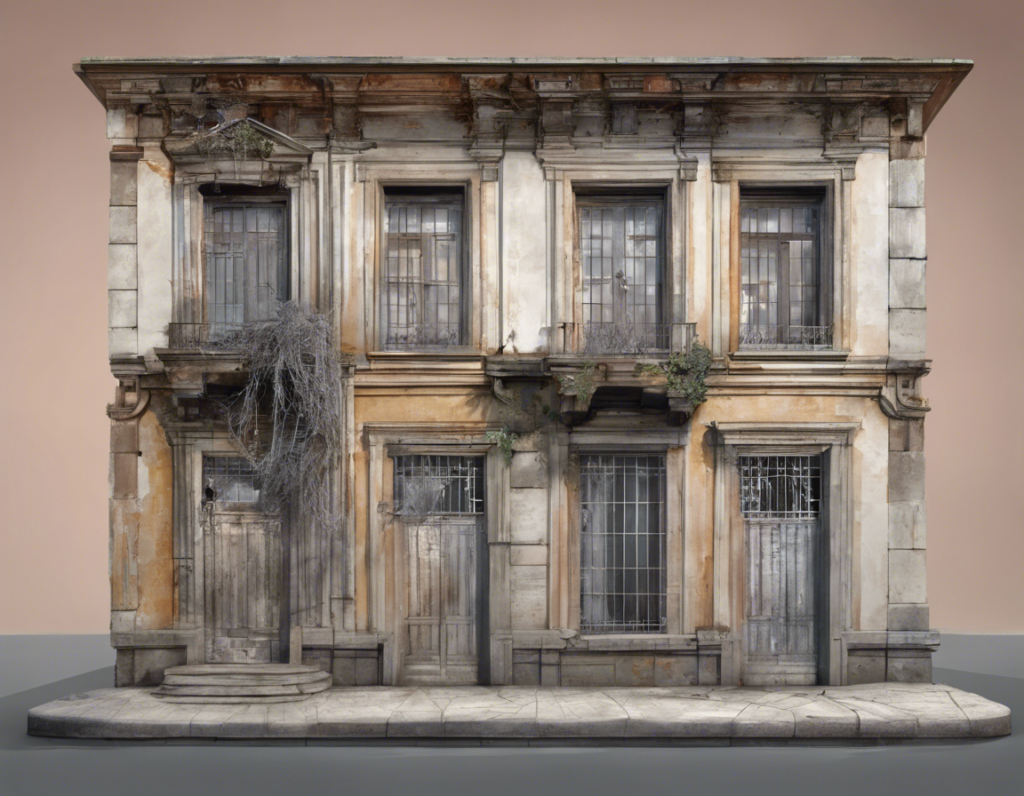Facade strain, also known as facade movement, is a common issue that can significantly impact the structural integrity and longevity of buildings. Facade strain refers to the deformation or movement of a building’s facade or outer shell due to various factors such as thermal expansion and contraction, foundation settlement, wind loading, construction deficiencies, and material deterioration. This phenomenon can cause structural damage, aesthetic issues, and safety concerns if not addressed promptly and effectively.
Understanding Facade Strain
Facade strain can manifest in different ways, depending on the type of building materials, design elements, and external conditions. Common signs of facade strain include cracking, bulging, displacement, spalling, and dampness on the building facade. These indicators may appear gradually over time or suddenly in response to external forces such as temperature fluctuations or strong winds.
Factors Contributing to Facade Strain
Several factors can contribute to facade strain in building structures. Understanding these factors is crucial for mitigating risks and implementing preventive measures:
1. Thermal Expansion and Contraction
Thermal expansion and contraction occur as building materials expand with heat and contract with cold. Large temperature differentials can create significant stress on the facade, leading to cracking and movement.
2. Foundation Settlement
Foundation settlement can cause uneven stress distribution on the building structure, resulting in facade deformation and cracking. Poor soil conditions, improper foundation design, or nearby excavation work can exacerbate this issue.
3. Wind Loading
Strong winds exert dynamic pressure on building facades, causing them to bend or vibrate. Repeated wind loading can lead to fatigue and structural weakening over time.
4. Construction Deficiencies
Poor construction practices or design flaws can result in weak connections, inadequate support, or improper material selection, leading to facade strain. Insufficient reinforcement or waterproofing can also contribute to structural issues.
5. Material Deterioration
Aging or deterioration of building materials, such as concrete spalling, metal corrosion, or masonry decay, can compromise the integrity of the facade and increase the risk of strain.
Impact on Building Structures
The consequences of facade strain can be far-reaching and detrimental to the overall performance and safety of building structures:
-
Structural Damage: Prolonged facade movement can lead to cracks in the walls, deformation of structural elements, and weakening of the building’s load-bearing capacity.
-
Water Infiltration: Gaps or cracks in the facade can allow moisture to seep into the building, causing dampness, mold growth, and interior damage.
-
Aesthetic Degradation: Bulging or displaced facades can diminish the visual appeal of the building, affecting its market value and perceived quality.
-
Safety Hazards: Structural instability resulting from facade strain poses safety risks to occupants, pedestrians, and neighboring properties, especially during severe weather events.
Preventive Measures for Facade Strain
To mitigate the impact of facade strain and ensure the longevity of building structures, proactive measures should be taken at various stages of construction, maintenance, and renovation:
1. Proper Design and Construction
-
Engage experienced architects and engineers to design and review the facade system for structural integrity and resilience.
-
Select high-quality materials that can withstand thermal variations, wind loading, and environmental exposure.
-
Implement robust construction techniques to ensure adequate support and load distribution throughout the facade.
2. Regular Inspection and Maintenance
- Conduct periodic inspections to detect early signs of facade strain and damage.
- Address minor issues promptly through repairs, sealing, or reinforcement to prevent escalation.
- Monitor movement and settlement patterns using advanced surveying and monitoring technologies.
3. Thermal Control and Insulation
- Install thermal barriers and insulation systems to reduce thermal stress on the facade.
- Consider ventilation strategies to minimize temperature differentials and humidity levels.
4. Wind Resilience and Reinforcement
- Incorporate wind–resistant features such as bracings, tie–backs, or dampers to enhance stability.
- Evaluate the surrounding environment for wind exposure and optimize the facade design accordingly.
5. Foundation Stability and Drainage
- Ensure proper site preparation and foundation design to prevent settling and subsidence issues.
- Manage water drainage effectively to prevent moisture infiltration and soil erosion near the foundation.
Case Studies and Best Practices
Several iconic buildings worldwide have faced facade strain challenges, prompting innovative solutions and industry best practices:
-
Sydney Opera House: The spherical concrete shells of the Sydney Opera House experienced thermal expansion issues, leading to cracks and water leakage. Engineers implemented a sophisticated monitoring system to track movement and installed expansion joints for flexibility.
-
Leaning Tower of Pisa: The famous leaning tower suffered from foundation settlement due to poor soil conditions. Counterweight measures and soil stabilization techniques were implemented to stabilize the structure and prevent further inclination.
-
Burj Khalifa: The tallest skyscraper in the world, Burj Khalifa, incorporates advanced wind–resistant design features such as smooth curves and reinforced concrete cores to mitigate wind forces and facade stress.
FAQs (Frequently Asked Questions)
Q1: What are the common signs of facade strain in buildings?
A1: Common signs of facade strain include cracking, bulging, displacement, spalling, and dampness on the building facade.
Q2: How can thermal expansion and contraction contribute to facade strain?
A2: Thermal expansion and contraction can cause stress on building materials, leading to cracking and movement of the facade.
Q3: Why is wind loading a critical factor in facade strain?
A3: Strong winds exert dynamic pressure on building facades, causing them to bend or vibrate, and can lead to fatigue and structural weakening over time.
Q4: How can foundation settlement impact facade strain?
A4: Foundation settlement can cause uneven stress distribution on the building structure, resulting in facade deformation and cracking.
Q5: What preventive measures can be taken to address facade strain?
A5: Proper design, regular inspection, thermal control, wind resilience, and foundation stability are essential preventive measures to mitigate the impact of facade strain.
In conclusion, facade strain poses significant challenges to the structural integrity and durability of building structures. By understanding the contributing factors, implementing preventive measures, and learning from best practices, architects, engineers, and building owners can effectively manage facade strain issues and ensure the long-term resilience of buildings against external forces and environmental conditions.
